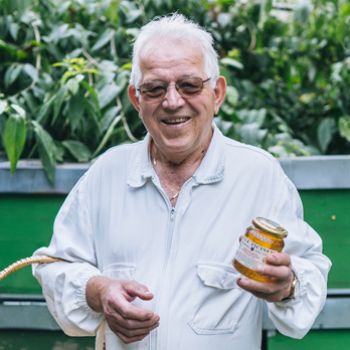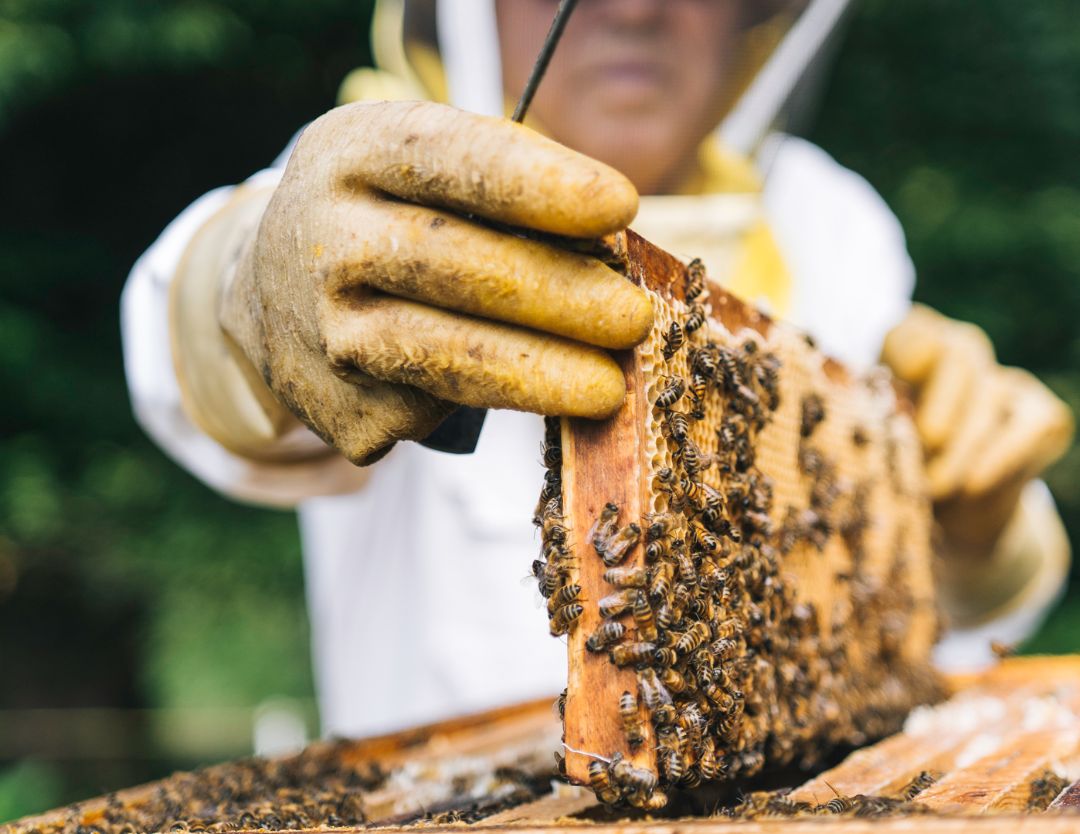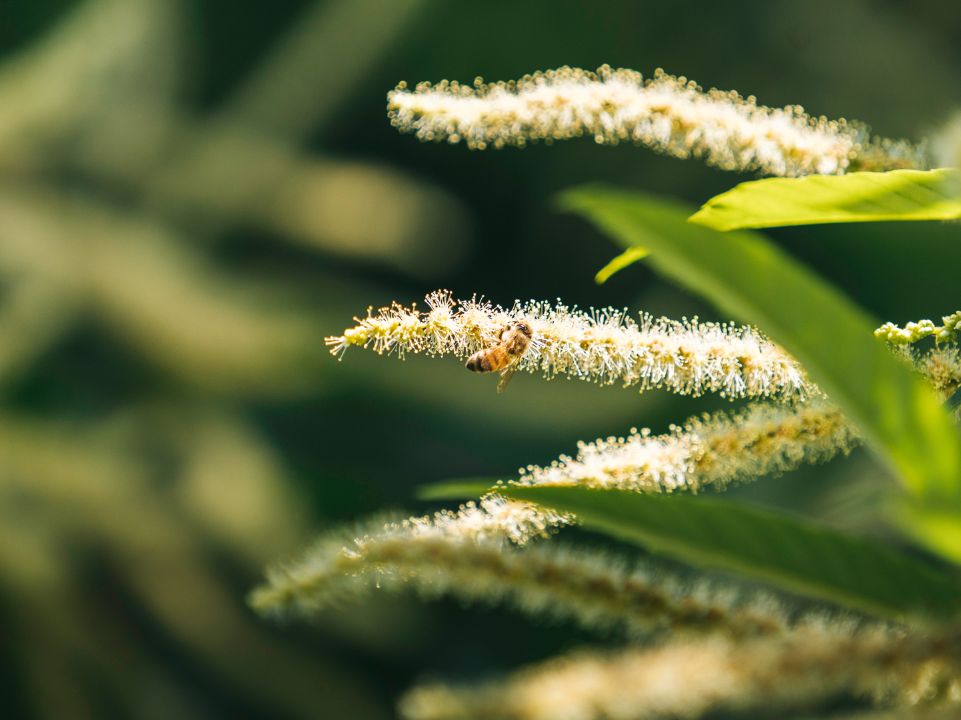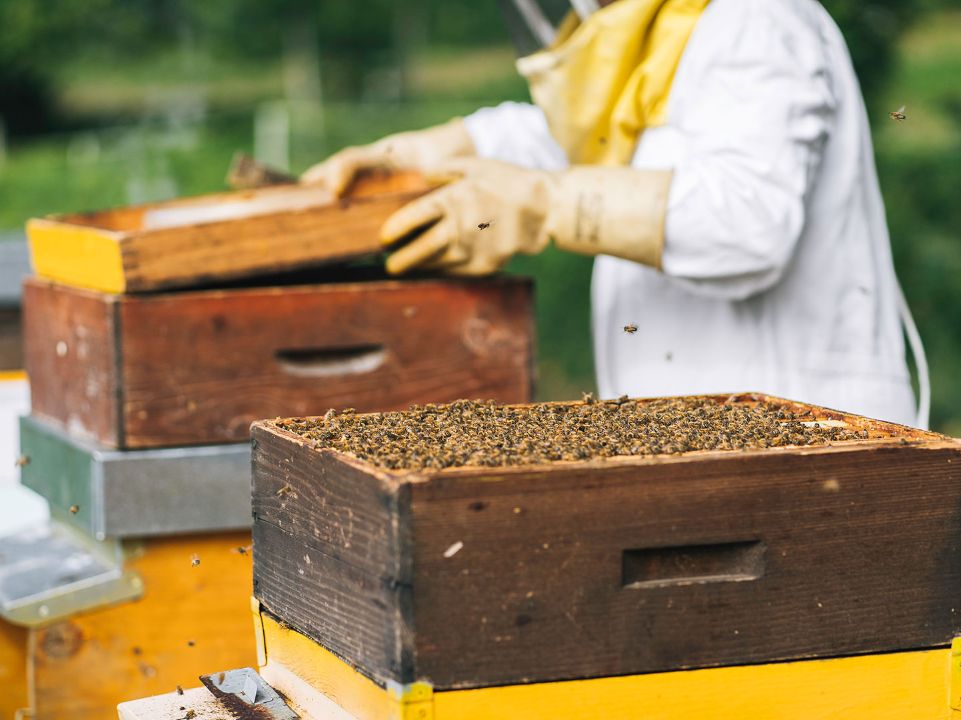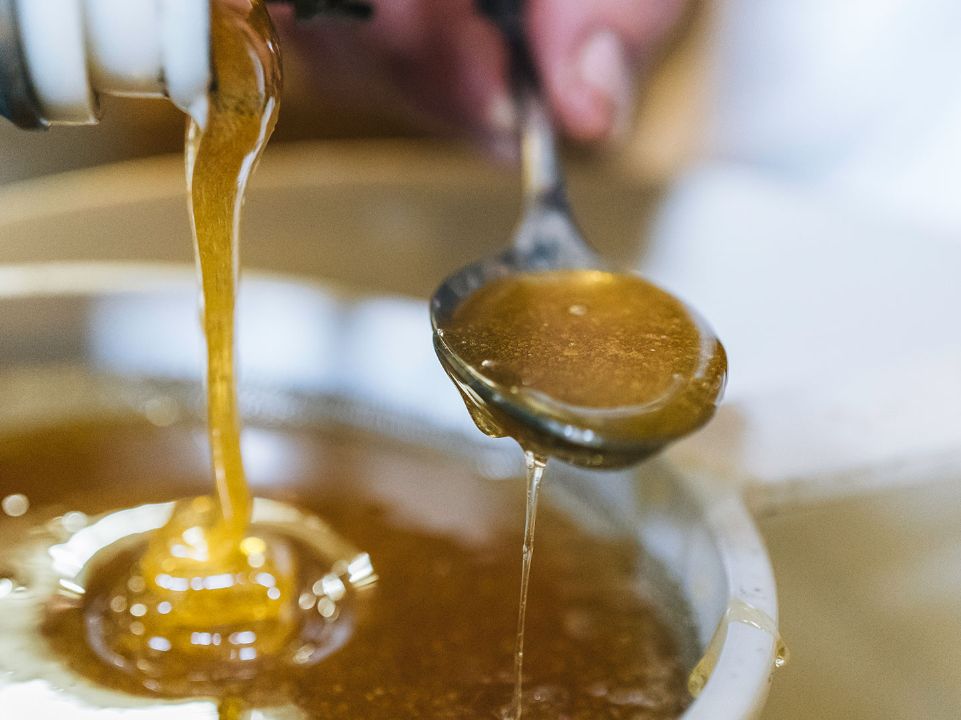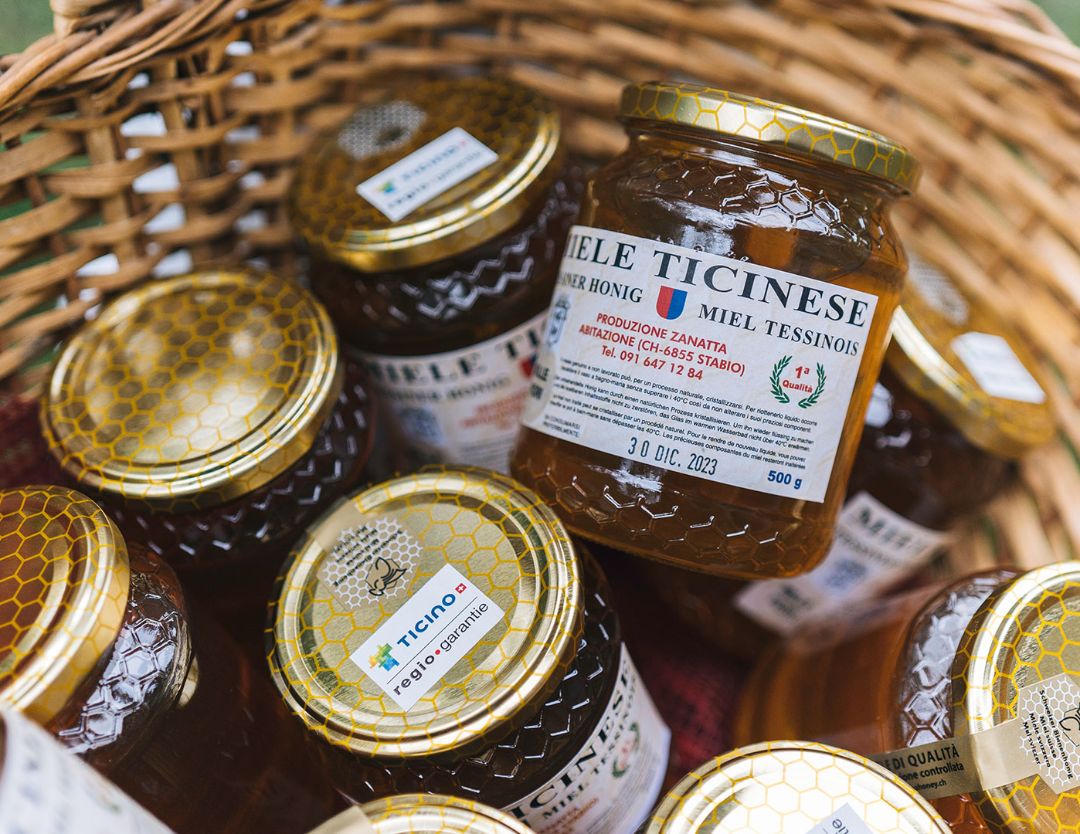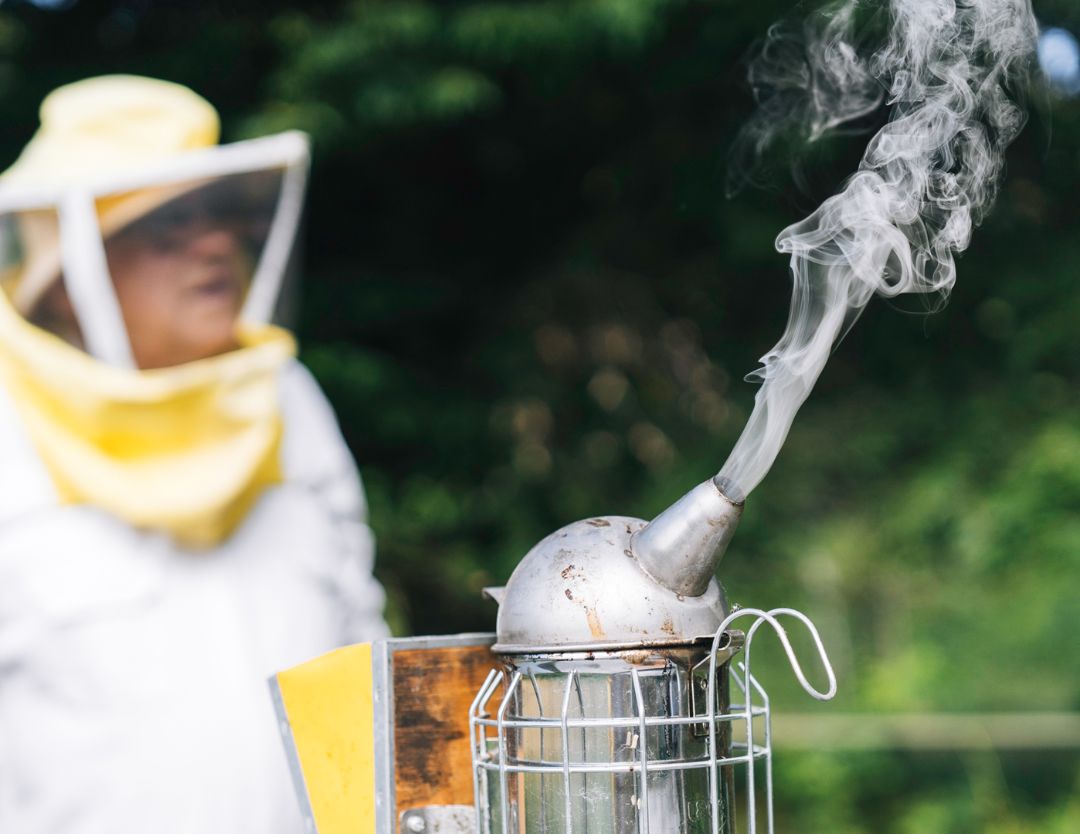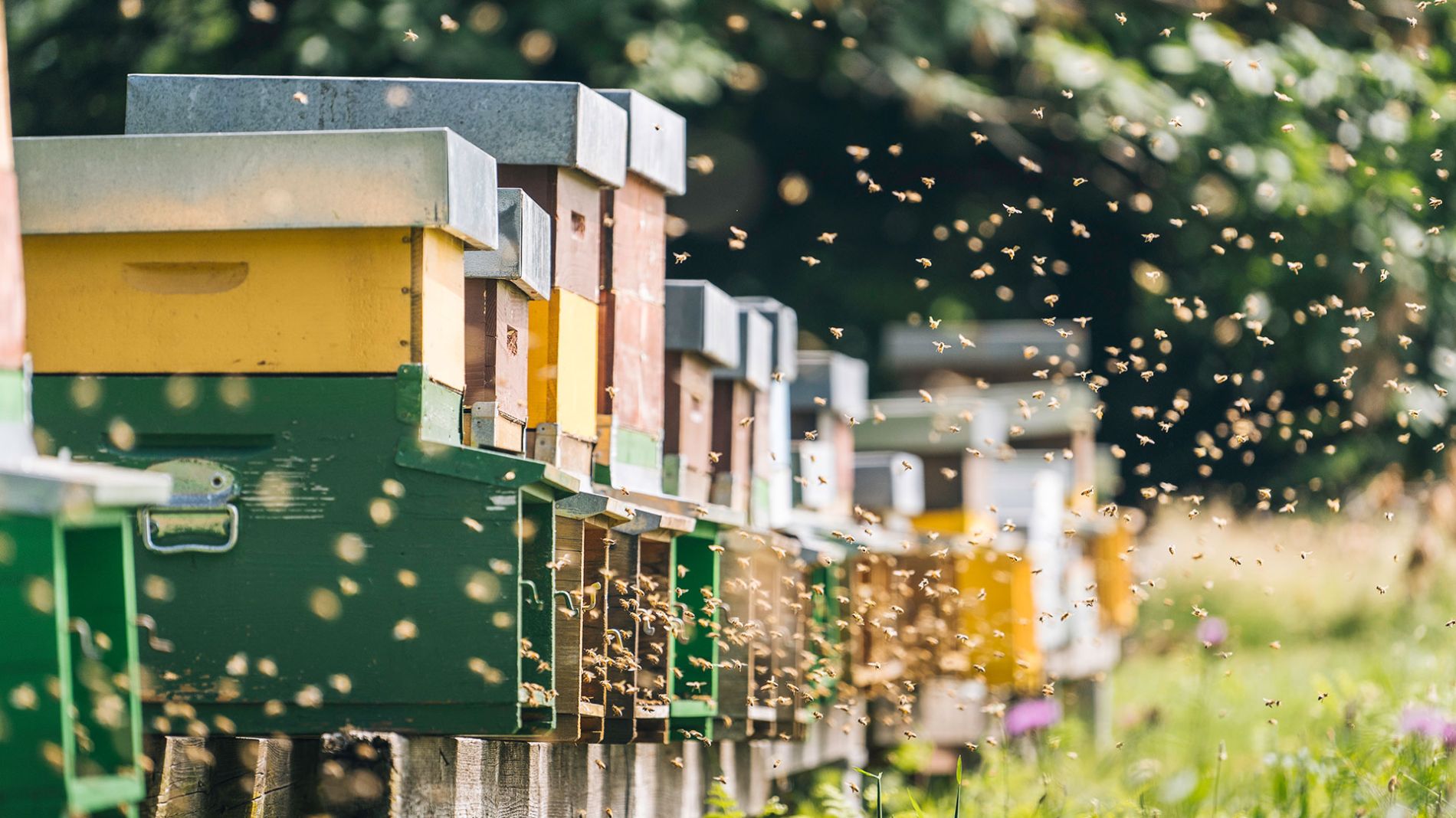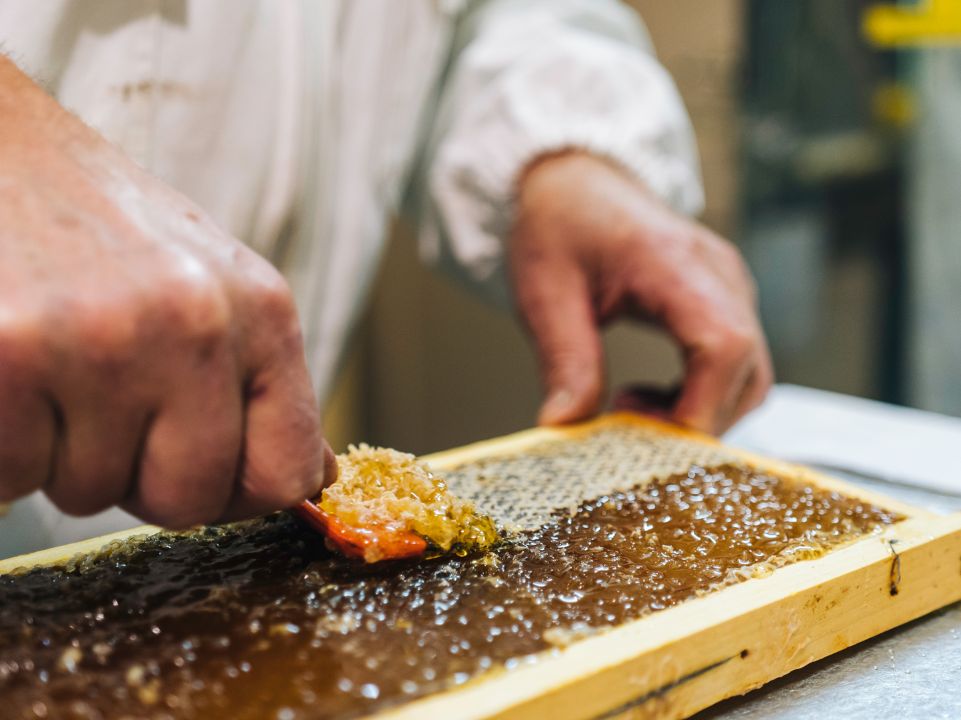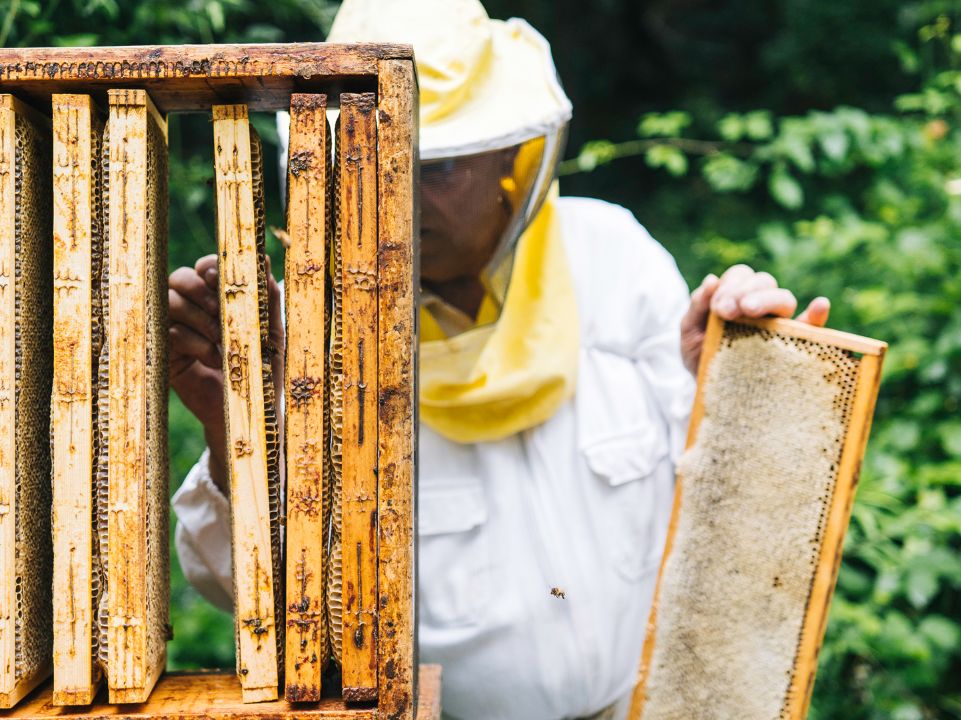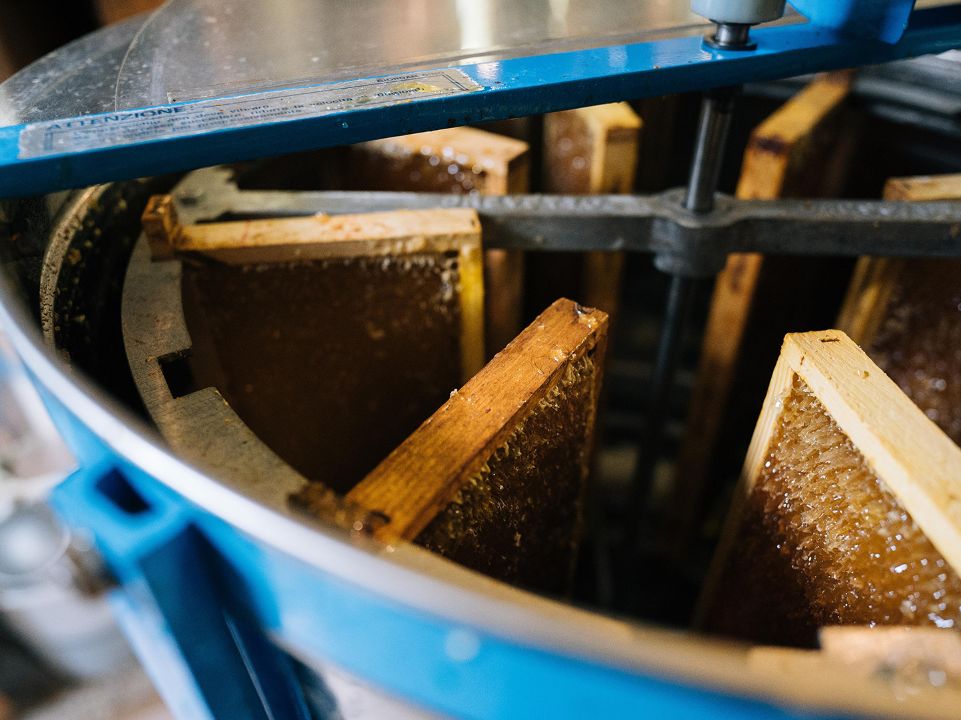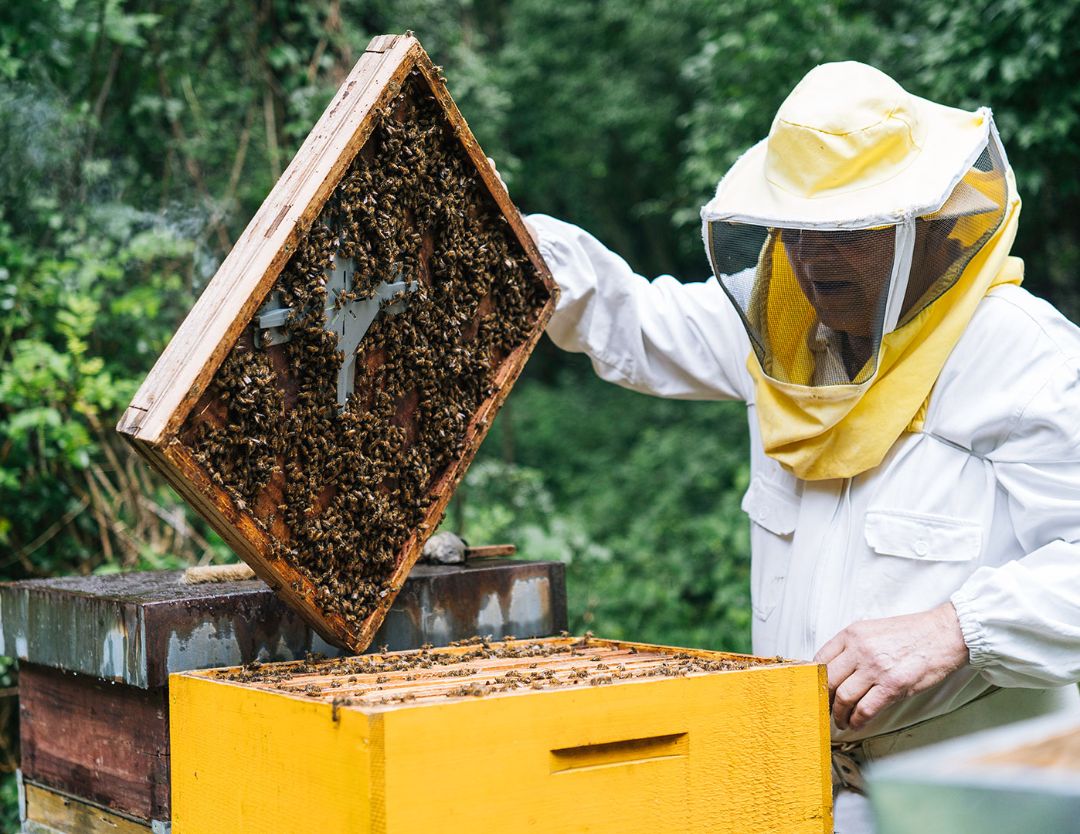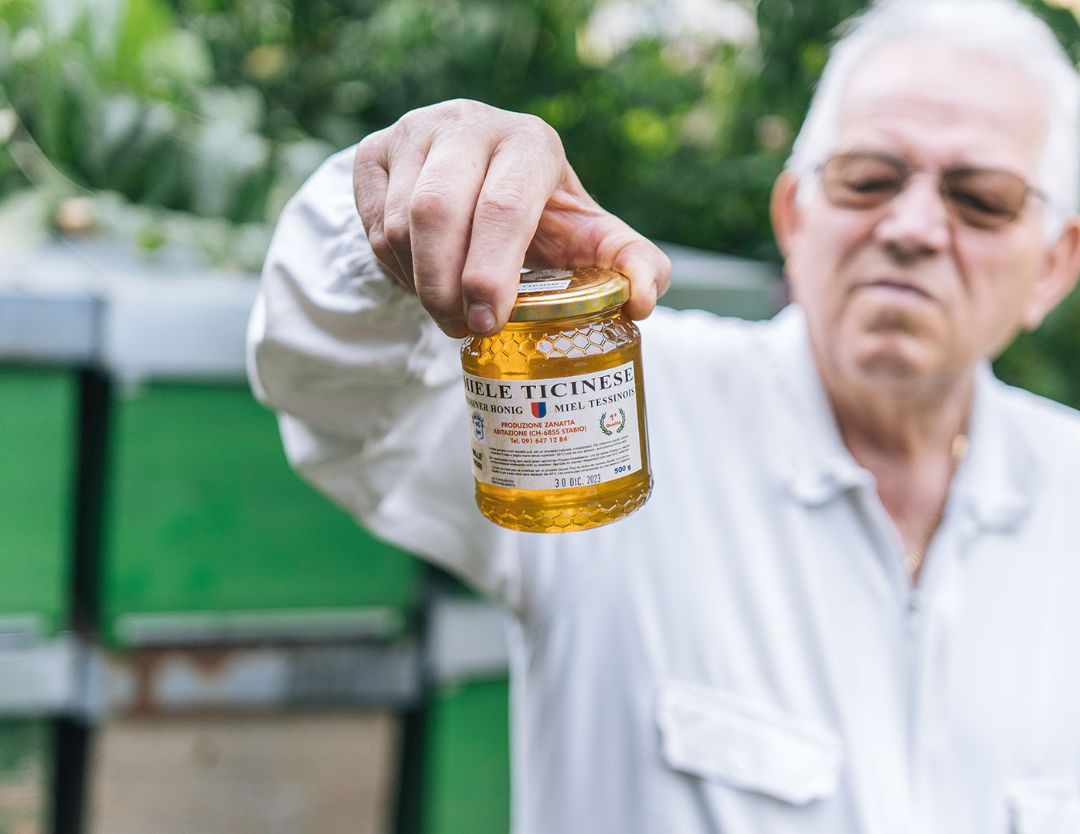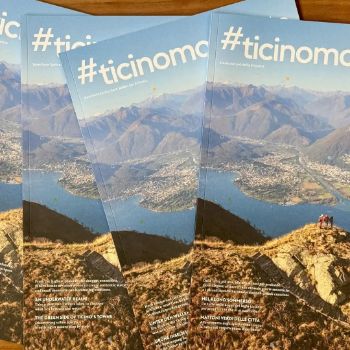With the help of around fifty bee colonies, apiarist Carmelo Zanatta from Stabio makes high-quality Ticino honey sustainably and with a love for the region. Acacia in Mendrisiotto, millefiori around Lugano and rhododendron in the Bedretto Valley are just a few of his honey specialities, resulting from a passion that developed purely by chance.
THE CHARACTER
Carmelo Zanatta, beekeper and bee inspector
My favourite place to relax is out in nature with my bees.

